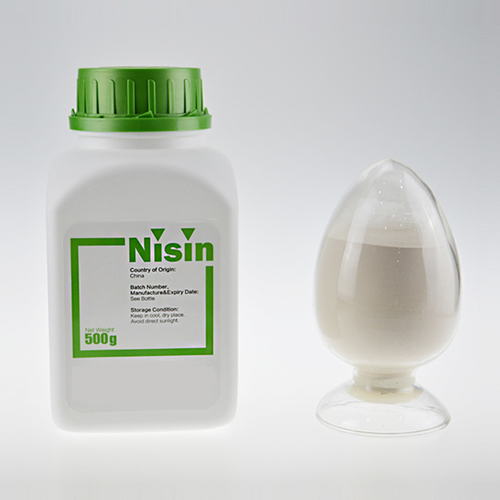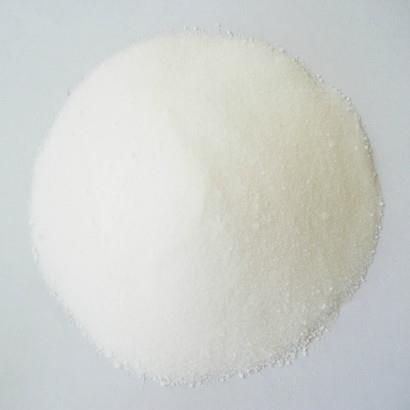Uses of Nisin
Nisin was less effective in high-fat sausages and in the presence of orthophosphates. Samelis et al found that dipping sliced pork bologna in nisin (125 μg/ml) plus sodium diacetate (3 μg/ml) was more effective against L. monocytogenes (2–3 log CFU/cm 2 ) during vacuum-packaged storage (90 days, 4°C, vacuumpackaged) than nisin plus lactic or acetic acid, sodium actetate, sodium diacetate, potassium benzoate, or potassium sorbate, although nisin plus acetic acid (3 and 5 μg/ml) or potassium benzoate (3 μg/ml) also inhibited L. monocytogenes for 90–120 days. When used alone, nisin reduced initial populations but did not inhibit L. monocytogenes during storage.

Synergistic activity
Similar results, regarding the synergistic activity of nisin and organic acids, were reported by Geornaras et al. Rayman et al found that nisin (75 ppm) was more effective than nitrite (125 ppm) against C. sporogenes PA3679 within a meat slurry system. Nisin was not affected by high levels of iron (meat component or iron salts), but was gradually depleted to subinhibitory levels during storage (4°C, 56 days) as spore level and/or pH increased. Nisin (75–100 ppm) plus nitrite (40 ppm) inhibited C. sporogenes PA3679 spores throughout extended temperature abuse (56 days at 25°C); when added individually and at much higher concentrations, neither nisin nor nitrite was inhibitory.
Combinations of nisin and lysozyme were shown to effectively inactivate grampositive
bacteria, including S. aureus , due to rapid depolymerization of cell membranes
which results in increased damage to membranes. In the presence of sodium lactate, nisin inactivated gram-negative and
gram-positive bacteria in fresh pork sausage. Previous
exposure to ≤5 mM TSP resulted in increased sensitivity of C. jejuni to nisin. Similar observations were made regarding
increased sensitivity of L. monocytogenes to nisin in the presence of 5% ethanol.
Uses
Although an outer layer of harmless white mold mycelia on dried sausages may be preferred in some regions of the world, other types of mycotoxin-forming or nonpathogenic mold species with green, gray, or yellow pigmentation are considered unacceptable by almost all consumer groups, and may be controlled with natamycin.
The removal of all/unacceptable types of mold can be both time consuming and costly, but the health risks associated with such practices warrant even greater concern.
Toxic and allergenic mold metabolites may not be removed from sausages during washing and additional types of food pathogens may be introduced. Natamycin inhibits mold but is ineffective against LAB, and thus, is useful in fermented food products.When approved for use, Thomas and Delves-Broughton (2005) suggest that dried sausages are most effectively treated when sprayed or immersed in natamycin at levels between 1,250 1981 and 2,000 ppm. In general, immersion treatments are not effective unless applied to sausages in natural casings.
You may like
Related articles And Qustion
Lastest Price from Nisin manufacturers

US $0.00/g2025-04-21
- CAS:
- 1414-45-5
- Min. Order:
- 100g
- Purity:
- ≥98.0%
- Supply Ability:
- 10kg/month

US $1.00/kg2025-04-21
- CAS:
- 1414-45-5
- Min. Order:
- 1kg
- Purity:
- 99%
- Supply Ability:
- 10 mt



